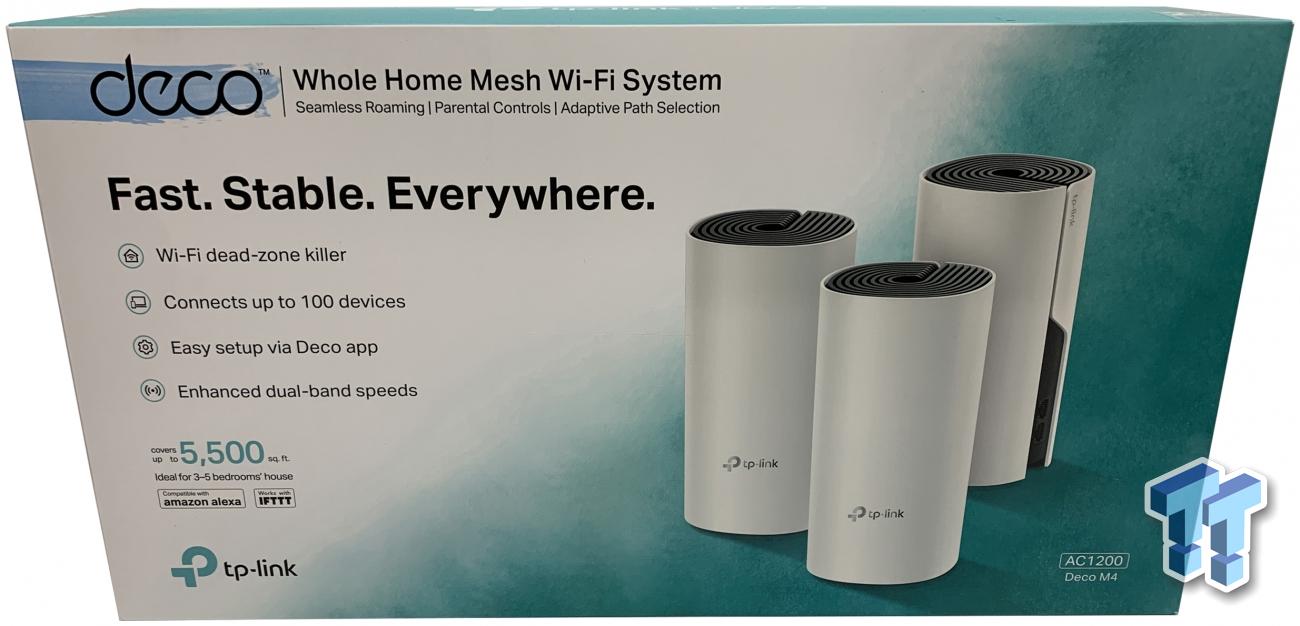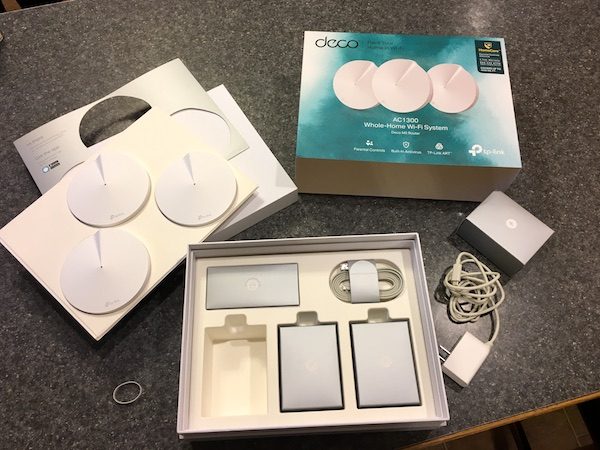
Tp Link Deco S4 Review
Related Items:
9.2

TP-Link Deco Mesh WiFi System
Best Values
9.1
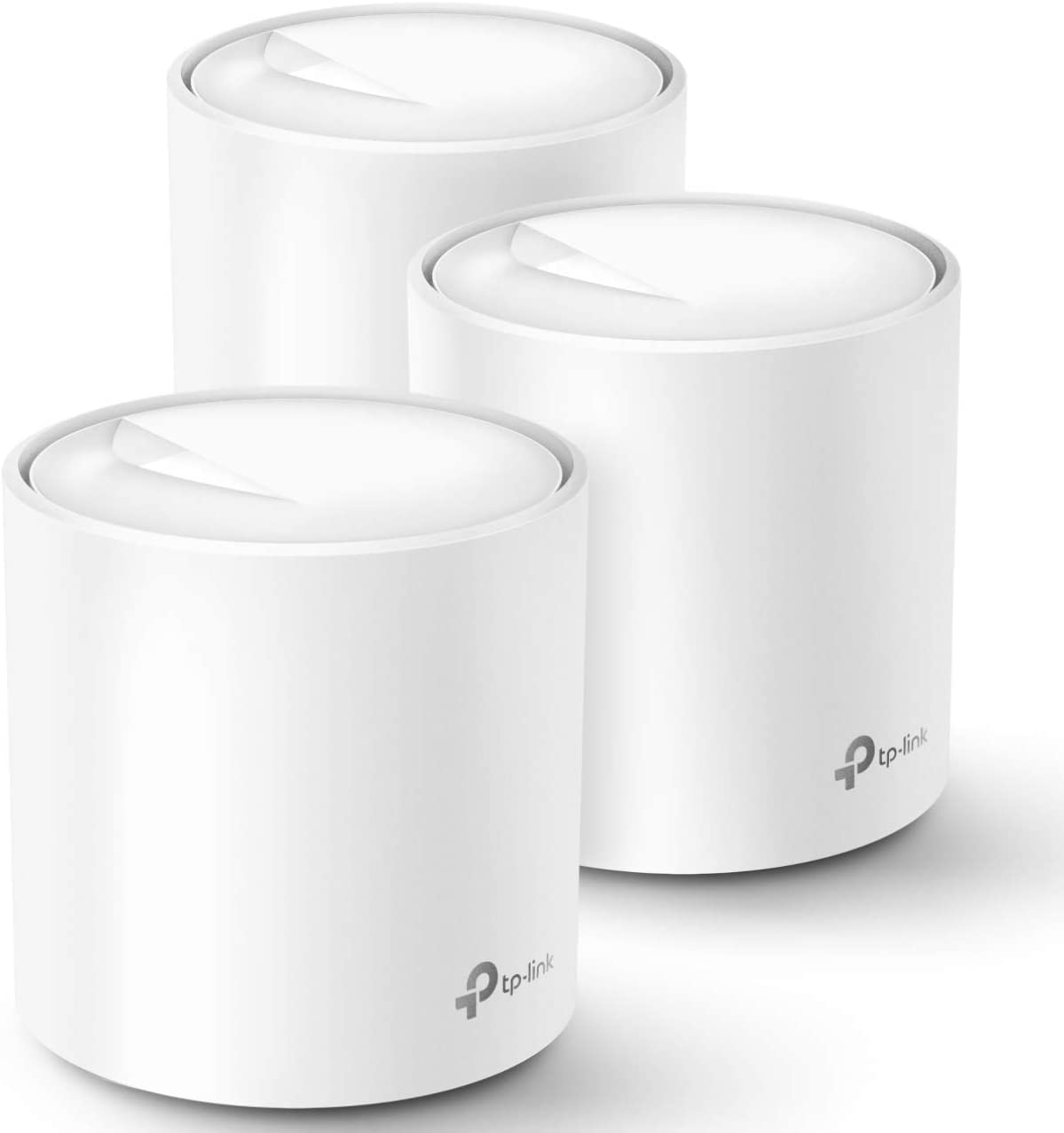
TP-Link Deco WiFi 6 Mesh System
The Deco app helps you set up your network in minutes with clear visual guidance and keeps you in control even when you are not home.
9
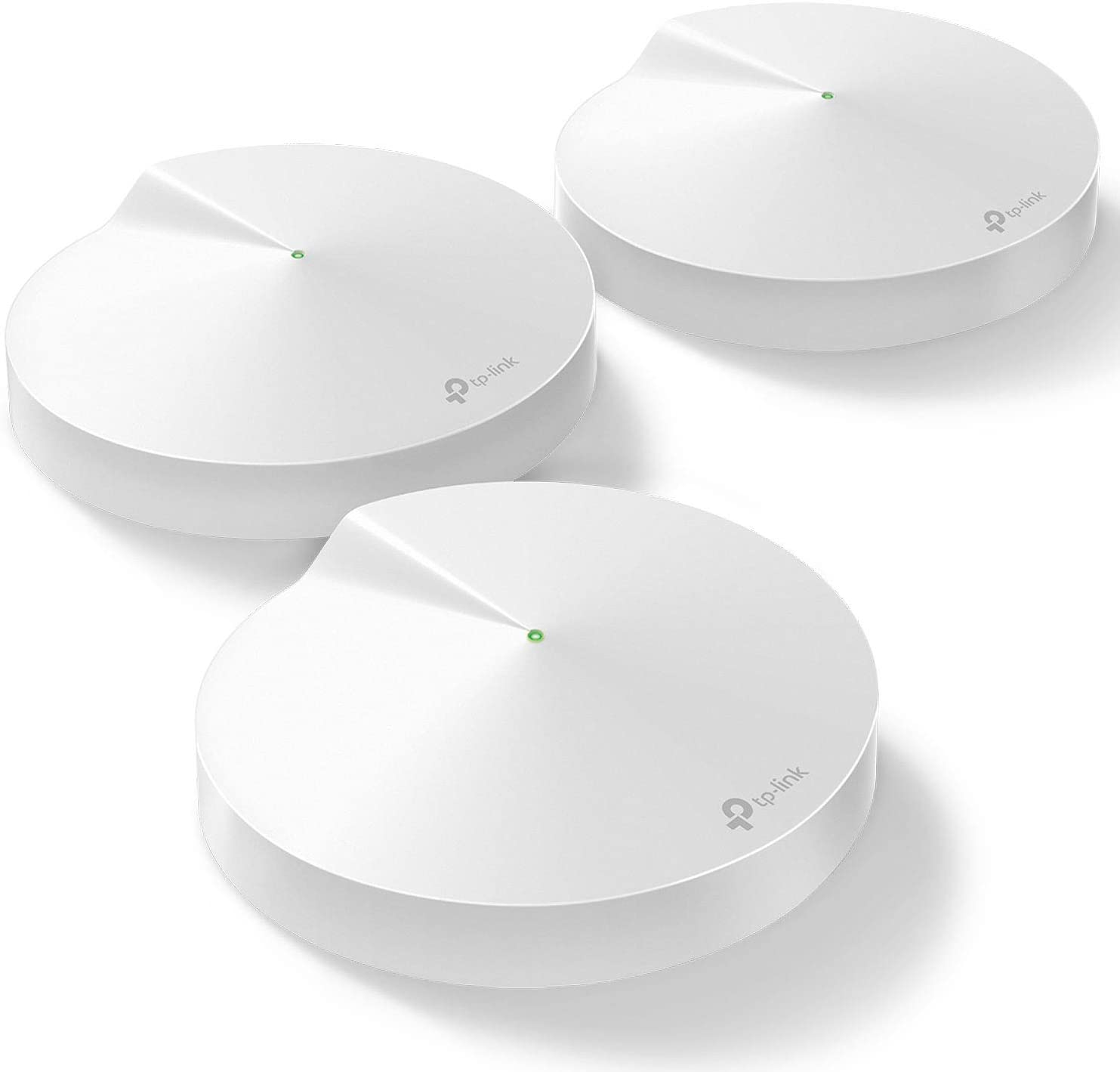
TP-Link Deco Mesh WiFi System
The S4 Deco devices have two auto-sensing Gigabit ethernet ports which are useful for when someone needs to plug in something else besides wifi devices.
All TP-Link WiFi devices work with the S4 Deco units so if someone wants to expand their network or upgrade, they won’t need to buy any other device
. This makes it easier because all the units in the network work together so one person doesn’t slow down everyone else’s connection. The S4 Deco unit has a lot of features.
You can set up profiles for each person, “blacklist” devices that are not allowed to use your WiFi, monitor the WiFi’s health and usage, etc
.
Download the TP-Link app, pick your product, and follow the steps
. The Wi-Fi signal might not work at first, but you can try again with the button on the screen.
When you want to add another device to your home’s Wi-Fi network (WiFi signal), go back into the app and put it in a different location in your home
. TP-Link is an app for your phone. It makes it easier to set up WiFi at home.

You can download the app and then follow the instructions. There were some hiccups, but doing the Try Again button fixed it. The S4 router unit plugs into any open port on your FIOS modem, and then you can add other units throughout your house using the app too. The p has a lot of features. You can set up user profiles for people who are using the internet, you can “blacklist” electronics from using your network, and you can monitor how much it is being used.
So, I bought one and now everything is good! In looking for a better solution to my problem, I looked at Mesh networking. It was supposed to work with my FIOS router. I wanted a cost-effective product.
Tp-Link’s Deco S4 series is cheaper than the previous M4 series and got good reviews, so I bought it
.
TP-Link WiFi extenders are easy to use
.
I have FIOS 100/100 service, but I am getting speeds of 100+ Mbps on my ground and third floors (both are wired) and almost a full 80 Mbps on my second floor with a non-wired S4 unit outside on my back deck, the speed drops to “only” 60 Mbps…incredible!
I spent about 4 hours testing it for stress and found it to be very reliable…consistent and dependable. If you have an S4 router, your devices will connect to the strongest signal automatically. You don’t need to switch networks because the router has switched. The speed is very fast. I have FIOS 100/100 service and I get speeds of 100+Mbps on my ground and third floors (both are wired) and almost a full 80 Mbps on my second floor with a non-wired S4 unit.
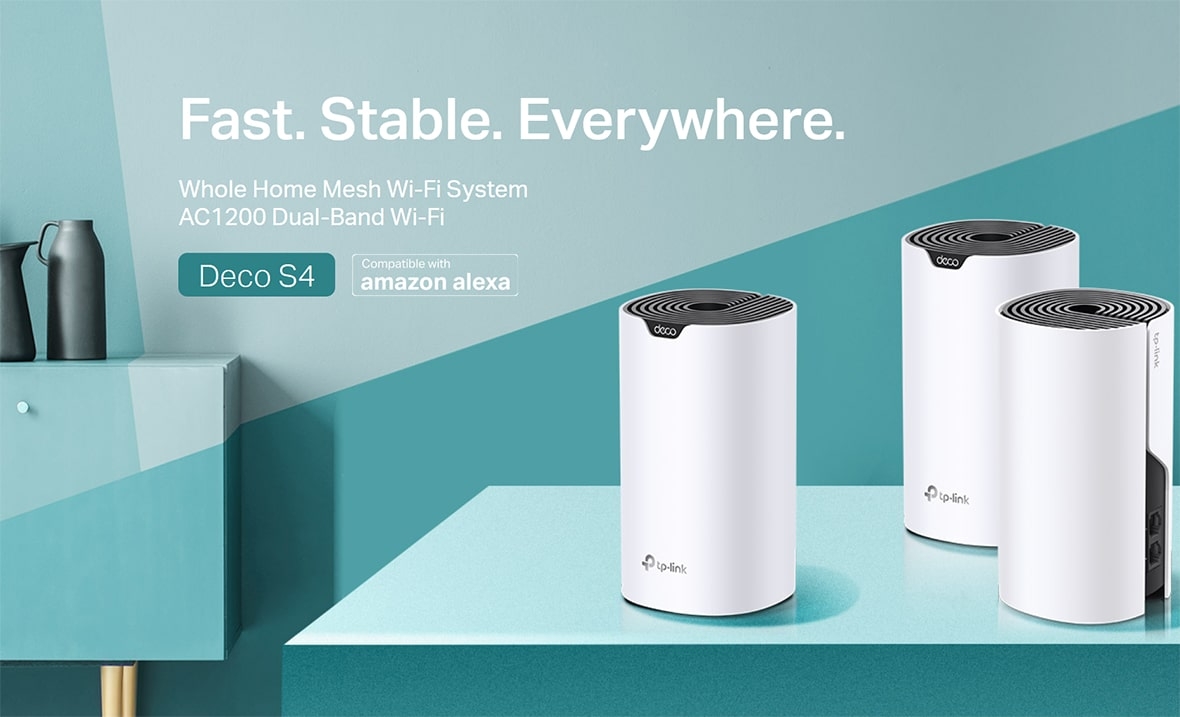
Outside on my back deck, the speed drops to 60Mbps…incredible! I spent 4 hours stress testing the network and found it to be rock solid…very consistent and dependable. The Deco S4 is a WiFi booster. It has good WiFi performance and it’s easy to set up. I am happy with the coverage of the product and it is not a bottleneck for your internet. The price is very nice too! This is a long review.
Tp Link Deco S4 Review
| Deco Unit | Price | Features | Performance |
|---|---|---|---|
| Deco M5 | $300 | 2 Ethernet ports, Bluetooth, Trend Micro Antivirus | Solid router performance, mediocre satellite performance |
| Deco X20 | Varies | 2 WAN/LAN ports, expandable, compatible with other Deco models | Extended range, good throughput performance |
| Deco S4 | Varies | 2 Ethernet ports, parental controls, Alexa compatible | Easy setup, AC1200 Mbps speeds, up to 100 device connections |
| Deco M4 | Varies | 2 Ethernet ports, Bluetooth | Solid router performance, mediocre satellite performance |
| Deco W7200 | Varies | Tri-band design, dedicated backhaul | Outperforms dual-band systems without backhaul, Wi-Fi 6 compatible |
| Deco M9 Plus | Varies | 2 WAN/LAN ports, Trend Micro Antivirus | Fastest Wi-Fi router, 546Mbps |
Prices and availability
The best thing about the TP-Link Deco M5 is its $300 price (around AU$400), which makes it more affordable than the majority of other options
. Google WiFi costs $279, or around AU$360, for three units. Netgear Orbi, which is more powerful, will cost you closer to $400, (or about PS320, AU$520), for just a couple.
Although the BT Whole Home triple-pack is about as expensive as the Deco M5, it’s only available in the UK
.
As with other offerings, you can buy additional satellites if you feel the need, although as this is a three unit offering, you probably won’t have to unless your home is very long, or particularly large.
First Impressions
TP-Link claims that the products are designed to fit seamlessly in your home. However, some homeowners might find it difficult to conceal their TP-Link devices behind televisions and closets. Although it’s minor, an aesthetically conscious design could have made a big difference.
The second impressions that you make as you setup the system will save you from a bad first impression. The Deco app has a simple interface. It is clean and tidy. Once you have set up the main router, you can add the satellite extender. Simply plug it in. It’ll automatically find its way onto the mesh and start boosting your signal, no network scans, QR codes, IP addresses, button presses or taps in an app needed.
The two Deco devices are identical, so you can use either one as the main router or as an extender
. The two devices can be combined to cover 5,500 sq. feet. However, TP Link suggests that you only use one device for every 2,000 square feet. This will ensure a better connection and greater range. These are AX3600 units, the W7200 brand indicating support for WiFi 6, and the 3600 indicating the top speeds combined of all three band. The top speed can only be reached on one band. This means that you cannot connect to both the 5GHz and 6GHz bands at the same time. With the W7200 moniker, TP-Link is basically doubling down by multiplying the already misleading 3600 part of the speed rating by the number of routers in the box. That’s patently ridiculous, but I digress.
Each Deco device keeps it simple, with just two Ethernet jacks and a power port in the back
. I would have liked to have seen a USB port there for people who need to plug in a printer or external storage, and a third Ethernet jack would have been nice, too. To connect your main router to the modem you will need one of these jacks.
If you have smart home devices, media streamers or gaming consoles that need or benefit from wired connections to your network you may need an Ethernet splitter
. Still, most mesh routers these days are ditching the USB port, and some mesh routers don’t have Ethernet jacks on the extenders at all, so it could be worse.
I’ll also note that all of those Ethernet jacks cap the incoming wired speeds at 1Gbps. That’s plenty by today’s standards, but we’re already seeing multiple ISPs offer internet plans as fast as 2Gbps. A more future-proofed design would have been great, though it’s an understandable omission in a system that’s priced as aggressively as the W7200. For now, you’ll still need to sprig for a system like the Asus ZenWifi XT8 if you want multi-gig Ethernet jacks equipped for connections yet to come.
Tp-Link Deco X20
- 1
- 2
- 3
- 4
- 5
For a top-tier WiFi mesh system to extend the range of your network, the TP-Link Deco X20 is a champ
. The companion app for this mesh system makes it easy to setup and offers many of the best features. You can monitor your network status, check the placement of satellite nodes, prioritize specific devices, and set up parental controls to limit network access or block content.
The router and nodes are minimal and sleek, with 2 WAN/LAN ports on the back of each for hardwired devices or for setting up wired Ethernet backhaul
. The system can also be used with WiFi 6, making it far more compatible than the other routers reviewed. The coverage test was very positive and the router should deliver solid streaming and gaming data.
We also like that this system is expandable with additional nodes and compatible with other TP-Link Deco models if you need additional coverage
.
The system can be quite expensive, so it is worth considering if you don’t plan on making use of any advanced features or if your devices aren’t going to have WiFi 6 capability. The 5GHz network provided a greater area for moderate coverage than any other networks. Still, you could remedy this by tweaking node placement or adding additional points. Overall, this contender is one of the best available options, especially for anyone looking to extend their WiFi coverage and exercise more control over their network.

We are the right people to trust
David Wise is leading our review of WiFi mesh systems. He has previously reviewed smart home devices and networking devices, which gives him an in-depth understanding of electronic consumer products. He also brings his formal training as a mechanical engineer, focusing on electromechanical and robotic systems, to the review with the design of our testing protocol and the interpretation of results.
- Features
- Features
Range is an important test metric. We created WiFi heat maps showing the signal-to noise ratio (SNR), of each system in a split-level traditional home with NetSpot’s network mapping software. These maps allowed us to compare the signal strength and range between the competition and against the claims of a product’s manufacturer. GearLab stands behind its hands-on testing philosophy. This is evident in our WiFi heat maps that provide valuable details you might not otherwise be able to capture.
7
If you want to setup the Deco S4, make sure that you have downloaded the Deco App! This makes your life so much easier.
Deco’s setup is actually very simple. All you need to do is connect the router satellite to your smartphone via Bluetooth then follow the instructions on the app.
Connecting the individual nodes together is really easy, too. As soon as you power it on in the app, you’ll see it listed there and will be able to connect to it via Bluetooth once again at the press of a button.
If you don’t have a smartphone, you can do all this through the network config page although it is a little more long-winded.
The Deco S4 setup is another big plus. Each satellite can be either a router, or an access point. As we said earlier. It makes it much easier to adapt your setup. And you can save time in the initial setup from having to work out what’s what.
Tp-Link Deco X20 Review: Performance
The Deco X20 showed it’s extended range by staying online at 90-feet with 51
.
1Mbps available, while other mesh systems lost contact at this point
. It had a range of 95-feet, the best for a mesh router we’ve seen under these conditions.
The router’s capability to transmit strong signals through walls 20 feet away was satisfactory at 556.5Mbps. This is the same speed as the one available from the other side of the wall. That’s 40 percent off the pace set by the Orbi RBK852 (782.9Mbps).
This trend held when we set the test system up a floor above the host router and the Deco X20 yielded 320
.
5Mbps of throughput versus the Orbi RBK852’s 670
.1Mbps.
The Deco X20 Kit we chose came with a second satellite device that we connected to the router downstairs
. It recorded 150.5Mbps of data flow to a system 40-feet away. The three-pack covered 3,500 sq. feet and was sufficient to cover areas that Wi-Fi dead zones left behind by other mesh kits. The three-pack passed the saturation test. I was able to stream Youtube videos from my iPad Pro and Lenovo ThinkPad T470, while my Macbook Air played an Internet radio station feed. An HP Elite Dragonfly transferred data onto and from a networked storage device. The audio and video were both transmitted without issues.
Views from the Critics
We can be trusted. You know you can! You can double that effort by getting additional opinions. We’ve already even gathered some of those for you as well…
So what is the main consensus among other reviewers? Value for money, really! A lot of folks seem to be pleasantly surprised by the amount of performance you get for your money with this setup. This setup is excellent.
And just like us, many other reviewers online are pleased with the extra features. The app has received consistent praise, as well as the Alexa compatibility, and antivirus software. This is better than the Google Nest setup.
In fact, one of the main talking points surrounding the Deco S4 has been its security. Security is an important topic. Every single router manufacturer has a responsibility to protect their kit as much as possible.
What about TP-Link, though? Their performance has been flawless. We’ve had no problems with the antivirus software on our Archer AX50 devices. Although some people were quick to critique Deco S4’s settings, it has been fixed over the years.
All-in-all, reviews for the Deco S4 are very strong across the board. Many reviewers recommend this product to large audiences, just like us.
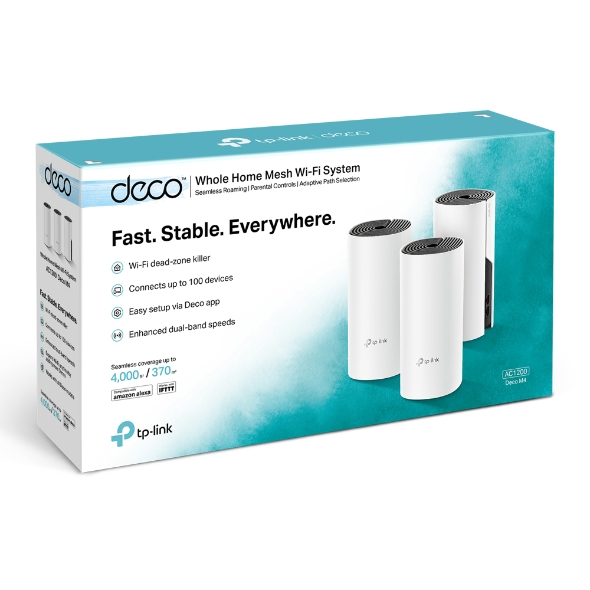
Tp-Link Deco X20 Review: Configuration
The Deco X20’s Dashboard Overview page is, as with all mesh networking kit, the main focus of attention
. It not only shows that the Internet is online but what devices are connected. Click on either item to see details, status and after a moment the current connection speed.
At any time, it’s easy to change the network’s name or password and see a monthly report of usage and security problems. The Deco X20 has an innovative Shake to Share feature that can send the log-in credentials for the main or guest network after shaking the phone or tablet. To prevent any device from being connected to the network, it can be blacklisted.
TP-Link’s dashboard page has a network map that summarizes all the major settings, but few places to make changes. You might find it helpful to see bar graphs showing processor load and memory usage.
To view a complete list of items for networking professionals, click on Advanced. This includes online status, IP address and Wi-Fi items such as network names and channels. This is all just a tease, as nothing can change. It can only check on individual mesh units’ firmware levels and update them individually.
Deco X20 comes with a 2-year warranty. This is a significant upgrade to Netgear, which only offers 90 days of support and a year of protection. TP-Link offers online assistance that is comprehensive and contains videos and instructions to set up the system and downloads. However, it does not offer TP-Link’s trademark online emulator so you can try its interface. The manual is minimalist and lacks even instructions for using the browser interface.
What happens when it is in Access Point Mode? Do They Have To Be Wired Into The Main Modem?
You can wire access point mode units via Ethernet cable to the main modem. This is different than using it as a true mesh system where the individual units transfer data wirelessly from one to the other back to the modem. I set mine up as access points, one on each floor of my three story home. I had single Ethernet drops on each floor from my AT&T main router so it was relatively easy. The AT&T unit is a combo modem/router. I disabled the wireless capabilities to prevent it from interfering with Deco units. This setup has the main advantage that wired backhaul is faster than wireless when it is used in a mesh network. The disadvantage to this setup is that it requires Ethernet cables to be in place. In my case coverage and speed have improved greatly. Wish I had done it years ago.

Solid Router Performance
The Deco M4 is easy to install. The mobile app was downloaded and I tapped “Let’s Begin” to select the Deco M4 model from the Deco list. Followed the steps to turn off the modem and restart the router, then attach the Deco router.
I waited 30 seconds or so for the LED to begin pulsing blue and used my phone’s Wi-Fi settings to connect to the router
.
I returned to the app, confirmed that I was connected, and the Deco router was immediately found
. I gave it a location (bedroom, office, kitchen, etc. I selected my internet connection type (DHCP) and set up a password and network name. I connected my phone to the new network, tapped Next, and waited a few seconds for the app to run a connection test. I tapped Add Another Deco and followed the same routine to install the second node, which I placed in my living room. After a quick firmware update I was ready to roll.
Although the Deco M4 router scored well in our throughput tests, satellite performance was average to poor
. On the close-proximity test (same room), the router scored 480Mbps. It was slightly slower than D-Link COVR 2202.
The TP-Link Deco M9 Plus router is still our fastest Wi-Fi network router, scoring 546Mbps
.
On the 30-foot test, the Deco M4 router led the pack with a score of 342Mbps
.
The Deco M9 Plus router scored 230Mbps, the COVR 2202 router scored 210Mbps, and the Velop Plug-In router scored 181Mbps
.
On the close-proximity test, the Deco M4 satellite scored 239Mbps
.
This was significantly faster than Linksys Velop (132Mbps), but slower than D-Link COVR 22202 (385) and Deco M9 Plus (386Mbps)
.
Results were similar on the 30-foot test: The Deco M4’s score of 212Mbps beat the Velop (118Mbps), but trailed the Deco M9 Plus (297Mbps) and the COVR 2202 (340Mbps)
.
Tp-Link Deco M5 Review: Performance
The TP-Link Deco M5 was installed at my home
. I ran the usual tests with the iperf3 command line application.
The Deco M5 delivers strong Wi-Fi signals house-wide, as you can see from the chart below
.
As expected, its close-range performance figures aren’t all that impressive. The BT Whole Home Wi Fi system is superior in terms of specifications, and provides the fastest speeds within the same room.
The Deco M5 single-node performance was also tested at long distance – this is to see how far your network can go from one node
.
I found the Deco M5 performs well and matches BT Whole Home Wi Fi
.
However, Google Wifi performs better
.
The TP Link Deco M5 was the best mesh configuration
. It delivered speeds that almost matched BT Whole Home Wi Fi in my kitchen – a well-known Wi-Fi black-spot in my home – but only fractionally ahead of Google Wifi. It was the configuration that delivers the most throughput at this spot, so I tried it with just two nodes. However, the results were a bit slower than the BT system. To test how the throughput changes when there are more nodes spreading the network, I added a third Node. The TP-Link came out on top. Although the differences between the two networks are not significant, I was able to reverse the trend if the tests were run again.
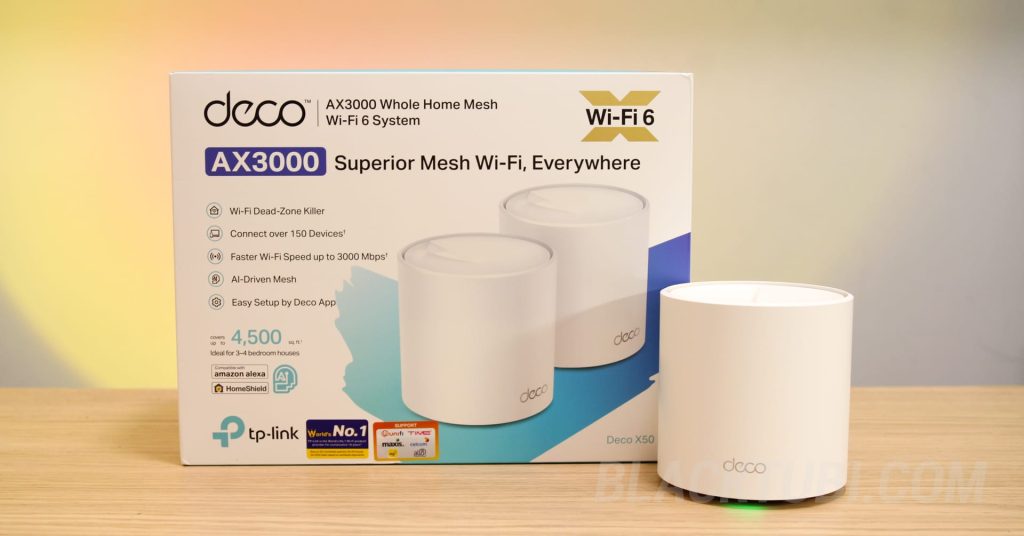
Tp-Link Deco 5 Review: Features, Design and Ease of Use
Deco M5 wireless routers are more appealing than the average one
. The top of each node has a disc-shaped design and a status LED at the peak. Each node is designed to work with Google Wifi and comes equipped with two Gigabit Ethernet ports. They also have a USB-C mains adapter.
The TP-link Deco app is used to set up and maintain the system
. It worked well when it was installed. As usual with mesh systems, it takes a few minutes per box, but I was ready to go in less than 20 minutes.
That’s partly thanks to the fact that each of the nodes has embedded Bluetooth, so you don’t have to fuss around connecting to Wi-Fi or entering passwords every time you want to add a node to the network
.
The system will require you to connect via TP-Link cloud before it can be set up. This has serious implications for privacy and security.
The Deco M5 is the mid-ground when it comes to Wi-Fi capabilities
. Like Google Wifi, it’s a dual-band 802.11ac system and doesn’t have a dedicated backhaul link, which means that throughput degrades as you get further down a chain of nodes.
The four antennas in each device have two MIMO connections, allowing for speeds of up to 400Mbits/sec over the 2.4GHz spectrum or 867Mbits/sec across the 5GHz spectrum.
The BT Whole Home Wi Fi system offers faster speeds, with a tri-band connection and a dedicated backhaul line at speeds of up to 1,300Mbits/sec
.
The Deco M5’s software and usability are quite basic when compared to traditional wireless routers
. However, it is a great choice for mesh networks.
As mentioned above, you get three years of antivirus coverage from Trend Micro and, since this is at the network level, it covers all your devices while they’re connected to your home network
.
Wi-Fi Towers – Tp-Link Deco Mesh Wifi System (Deco S4) Review
Its coverage area of 5,500 feet is respectable compared with the 4,500 square feet you get with the M9 Plus two-pack.

Performance
Given that the M5 is about $70 more expensive, but significantly better, it’s kind of the biggest competition facing the Deco M4 – so that was one of the big focuses. I swapped the two systems in and out to see which faced better when it came to coverage and reliability, seen below:
Ahead Of The Curve, For Gigabit Internet
The ZenWiFi AX (XT8) is almost a clone of our CT8 pick, but with significant upgrades in the form of future-proof technologies like Wi-Fi 6 and WPA3. We’d only suggest it if you have a gigabit (1,000 Mbps, or close to it) internet service plan.

We Liked
It is minimalist and pleasing in design. There are two Ethernet ports per unit, which gives you plenty of connectivity options.
It is simple to use and allows you to monitor your network. The inclusion of the security software is just the icing on the cake.
The Pitch
The TP Link Deco M5 mesh Wi-Fi system was my first choice
. It had a simple and clean look, providing plenty of fast-enough Wi-Fi coverage and speed.
When I reviewed the Deco M4, my main concern was whether it could replace three nodes of medium strength with two stronger ones.
Another thing that I was interested in was how simple it was for me to add the M4 to my mesh Wi-Fi network
.

Tp Link Deco S4 Review
Deco S4 WiFi system
. It’s simple to setup, can be used with an existing modem and doesn’t cause any bottlenecks. Also, it offers coverage for many miles. Its price is one of its greatest advantages! Finally, I feel that I have all of the internet connectivity I need!
Access Point Or Router?
A cool thing about Deco S4 is that you can set every satellite to function as either a router or just an access point
. The dual function makes it much easier to set up the system.
The Bottom Line
The TP-Link Deco M4 is rarely good enough to justify itself as a replacement for the M5, and it makes one-too-many software compromises for it to hold up as the budget-friendly alternative either
.

Tp Link Deco S4 Review
Tp-Link Deco – Installation
Deco is easy to set up. It’s similar to the Linksys Velop and can be done through an app for your smartphone, which supports both Android as well as iPhone. Each node can be plugged in individually and then the app connects to it via Bluetooth. This allows it to configure and connect the system.
One node is all that you need to get started. It can be connected to either your router or to your broadband router. However, unlike most routers third-party, nodes do not include a modem. You’ll connect to your router using the included Ethernet cable. An additional cable would be useful for connecting to other devices.
Similar: Top routers
Another problem is the Deco does not properly support using an existing router
. This setup is not possible when following the set-up process on the app.
However, if you just plug it in anyway then it will work, but rather than hooking into your existing network it creates its own, so anything connected to your existing router won’t work properly with your new Wi-Fi network – it will just piggyback on its internet connection
.
Plus, wiring up your entire house rather hurts the Deco’s appeal as a quick-and-easy product.
This is where the Netgear Orbi’s more expensive hardware makes itself obvious; backhaul is handled by a dedicated Wi-Fi network so speeds remain fast no matter what
.
Related: Best free antivirus software
Specifications
The Deco S4 sits in the ‘mid-tier’ Mesh router range
. You can find more powerful kit, such as the Netgear Netgear Orbi RK852. But for that, you’ll need to pay a premium which probably isn’t worth it for most people.
In fact, the Deco S4 is pretty accessible in its price. Although it is still more costly than the Google Nest system it has a much higher speed, which we all know is very desirable.
With the three-piece kit that the Deco S4 is, you’ll get up to 4000 square feet of range. However, this could be impacted by other things such as… well, walls.
Don’t worry, though. You can still add satellites to increase the range if you have walls. To increase range, you can add satellites. And that’s because of a little something called Mesh.
Mesh technology is an upgrade to traditional Wi-Fi repeaters. You don’t have to connect your device each time you switch from Mesh satellites to Mesh satellites. The device does all that seamlessly for you. You won’t have to stop watching Netflix.
Mesh can be quite pricey but the Deco S4 ain’t too bad. You just need to decide whether it’s right for you or not. If your internet plan offers anything faster than 350-400 Mbps, it might not be. Those with internet speeds less than 350-400 Mbps should continue reading.
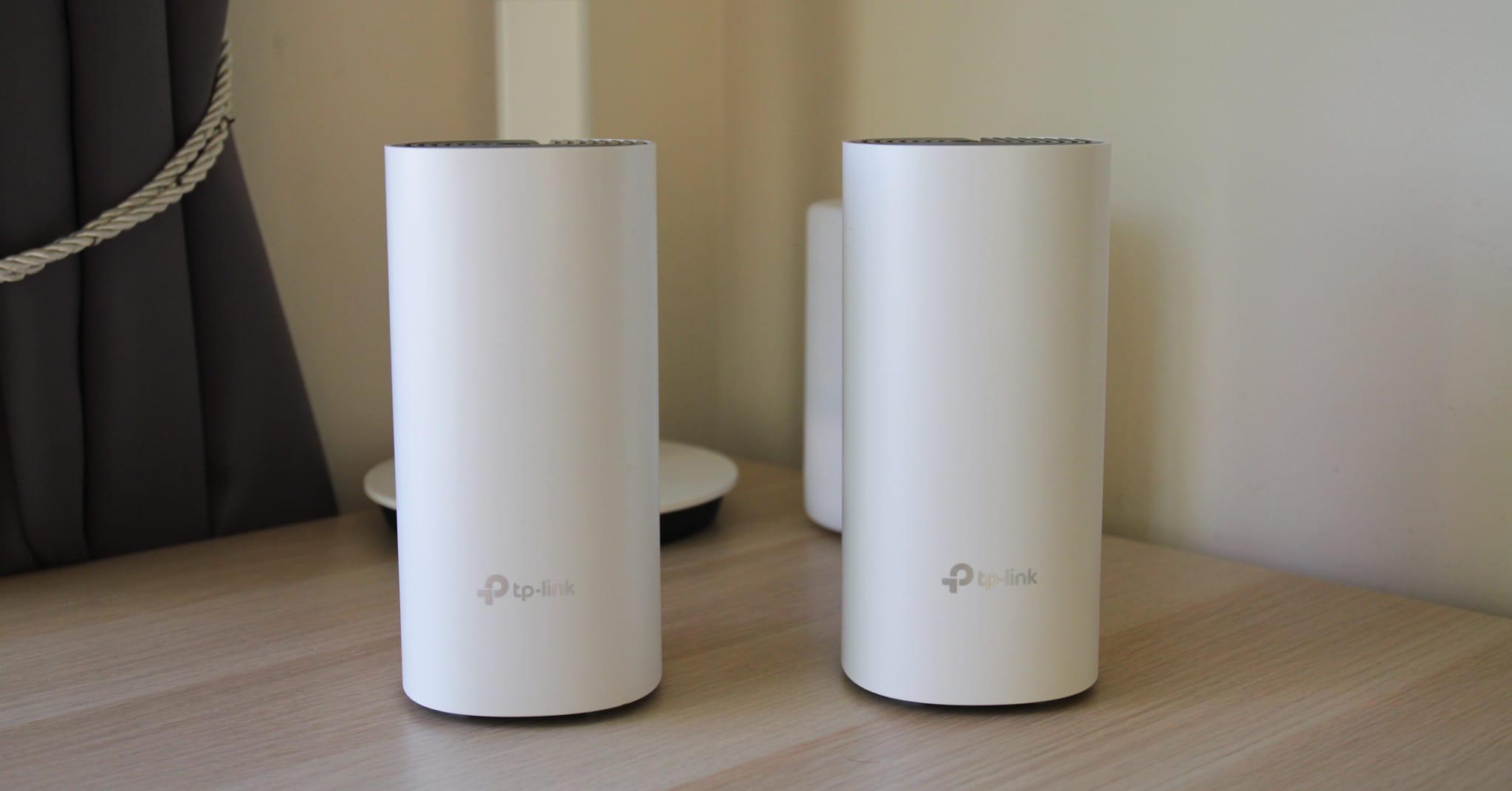
What happens when it is in Access Point Mode? Are they required to be connected into the main modem?
You can wire access point mode units via Ethernet cable to the main modem. This is different than using it as a true mesh system where the individual units transfer data wirelessly from one to the other back to the modem. They were set up on three floors of my home as access points. It was easy because I only had one Ethernet drop on each floor.
Like most isp providers, the unit from AT&T is a combination modem/router, so I turned off the wireless capability on it so it wouldn’t interfere with the Deco units
. This setup has the main advantage that wired backhaul is faster than wireless when it is used in a mesh network. Obviously the disadvantage is the need to have the Ethernet cables in place to support it. In my case coverage and speed have improved greatly. Wish I had done it years ago.
Tp-Link Deco X20 Review: Performance
Deco X20 demonstrated its extended range, staying online for 90 feet with 51.1Mbps. Other mesh systems dropped contact after this. It had a range of 95-feet, the best for a mesh router we’ve seen under these conditions.
Its ability to send a strong signal through a wall 20 feet from the router was acceptable at 556.5Mbps available on the far side of the wall. That’s 40 percent off the pace set by the Orbi RBK852 (782.9Mbps). The trend continued when the Deco X20 was placed on a level above the host router. It produced 320.5Mbps throughput, compared to the Orbi RBK852’s 670.1Mbps.
The Deco X20 Kit we chose came with a second satellite device that we connected to the router downstairs
. It recorded 150.5Mbps of data flow to a system 40-feet away. All told, the three-pack was enough to fill my 3,500 square foot home, covering locations that other mesh kits left as Wi-Fi dead zones. It also passed our saturation test, where I streamed Youtube videos to an iPad Pro and a Lenovo ThinkPad T470 while my Macbook Air played an Internet radio station feed and an HP Elite Dragonfly moved data onto and off of a networked storage system. All the audio and video came through without any artifacts.

Google Nest Wifi Router
- 1
- 2
- 3
- 4
- 5
If you are looking for a premium WiFi mesh system — particularly if you have a Google-based smart home — then we think the Google Nest WiFi Router system is a great option
. Compatible with both Google WiFi and Google Nest Points, you can mix and match to get the perfect network for your needs and the layout of your home. We tested using a trio of Google Nest Routers and saw some of the best coverage in our signal-to-noise ratio maps, in line with their impressively high claimed coverage area. The AC2200 model should have sufficient data throughput to allow most users to make the most out of their bandwidth. They are slim and discrete enough to blend in the background. Each router has two gigabit ports, which can be used for either a hardwired or wireless backhaul connection. You also have plenty of features in the Google Home app, allowing you to optimize your network, blacklist devices, or filter content — even allowing you voice control over your network using the Google Assistant.
The WiFi mesh system can be quite expensive, and it is more costly than other alternatives. We also found it a little taxing to set up, especially if you don’t already have a Google Smart Home set up. Download the Home app and log in or create an account. Next, add each router to your home by scanning the QR code at the base. We recommend the Home app to everyone who is looking for the best system and won’t mind spending a lot.
Download
The Deco S4 was 5 feet away from the satellite and achieved an impressive download speed of 317.27 Mb.
So what does that mean? We asked the question, “Is 300Mbps fast?” Not too long ago. The answer was yes! Well, fairly! This is not slow, and it would work well for many households as well as some small businesses.
In theory, it could handle as many as 100 HD Zoom Calls. It is important to note that many internet service providers (ISPs), have upload limits. This won’t be always the case.
The Deco S4 can connect up to 100 devices, so this is a great option if you want to throw a huge Zoom party!
How much more can 317.27Mbps do? Adobe Photoshop could be downloaded for Windows within 30 seconds.
Imagine installing the industry’s best photo editing software within a matter of seconds. That’s what the Deco S4 is all about. It’s kind of.
If you wanted to opt for a more expensive Mesh system, there’s no doubt that you’d get faster performance. Here’s what doubling (and then some) the price would get you if you were so inclined.
If you want to speed things up, an additional 500 Mbps reduces the Photoshop download size.
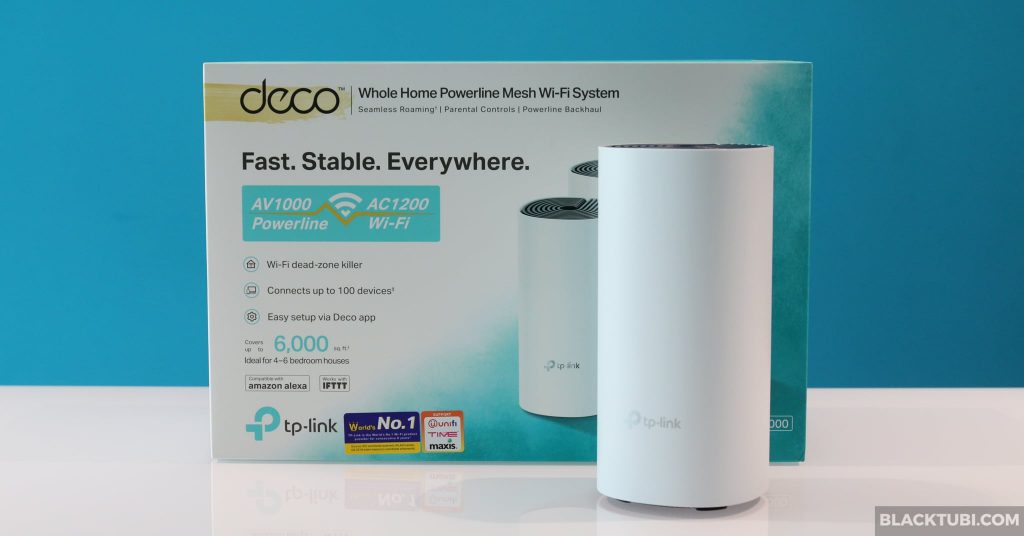
The Masterful Mesh
All quibbles with the design and the inflated speed rating aside, it’s time to talk about performance, and that’s where the W7200 truly shines. The graph above shows you the average room-by-room download speeds from my at-home speed tests, where my fiber connection is capped at 300Mbps.
In every room that I tested, the Deco W7200 (red), exceeded this number and came in second place to Netgear Orbi’s AX6000 mesh router (blue)
. That system costs more than three times as much as the Deco W7200.
The Deco also outperformed the Eero Pro 6 tri-band Wi Fi 6 mesh routers, as well as the AX6600 version the Arris surfboard max
. Both cost $150 more than what TP Link is asking.
The W7200’s tri-band design leaves behind most dual-band systems without a dedicated backhaul, such as the Eero 6 or TP-Link’s Deco X20
.
The Deco W7200 should also easily surpass the Netgear Nighthawk mesh router in dual-band mode and Nest Wifi which does not support Wi-Fi 6
. I did test both systems prior to upgrading to Wi Fi 6 testing equipment at home. I will save my direct numerical comparisons for when I have a chance to review them again.
Average speeds are all well and good, but if you really want to understand how a mesh router is performing, you need to dig a little deeper
. The graph below shows the average results from each speed test. I run multiple rounds of speed tests across multiple days during morning, afternoon and evening hours, so there are lots of dots in that graph — but it’s difficult if not impossible to see all of them because of how closely they overlap. This is consistency. I hit the same top speeds test after test with little variation, except for the hallway and master bedrooms, which required the system to determine whether it should direct traffic back to my living room router or through the bedroom extension. The quality of my connection was not affected by the variance, even though it did make a difference.
That overall consistency includes testing rounds where I started my connection close to the router (in the living room) and then worked towards the back of the house, and also an equal number of testing rounds where I did the opposite, connecting far from the router (in the back bathroom) and working towards the front. That approach will often cause a mediocre mesh to trip over itself and get confused about which device to route my connection through, or which band to steer my traffic onto, but that wasn’t the case with the W7200. It was able to maximize my connection speed, no matter how close I am or far away, and delivered an average front-to back average of 350Mbps, and a near identical back-to–front average of 352Mbps.
I run the majority of those speed tests on a laptop that supports Wi-Fi 6, but I also make sure to run multiple sets of tests to a Wi-Fi 5 device, too
.
Wi-Fi 6 is backward compatible, so the W7200 and other Wi-Fi 6 routers like it can still connect with older devices like that, but those devices won’t be able to take advantage of the new features that make Wi-Fi 6 faster and more efficient
.
In some cases, that can mean that speeds from a Wi-Fi 6 router to your Wi-Fi 5 devices will be as much as 30% slower than the speeds you’ll see on a Wi-Fi 6 device
.
With the W7200, however, the difference was minimal. My overall average with a Wi-Fi 6 device was 351Mbps, compared to 337Mbps with a Wi-Fi 5 device. This is only 4% slower.
If the W7200 has a weak spot with regard to performance, it’d be the upload speeds, which were slightly slower on average than I’ve seen with other, similar mesh routers. My home’s fiber connection is symmetrical, so the uploads are capped at 300Mbps, same as the downloads. Across all of my Wi-Fi 6 tests, the W7200 finished with an average upload speed of 249Mbps — still fast, but notably lower than the averages I saw from the Netgear Orbi AX6000 (342Mbps), the Eero Pro 6 (296Mbps) and the Arris Surfboard Max AX6600 (261Mbps).
Even the Asus ZenWifi XT8, another router I tested back before I was using Wi-Fi 6 gear here at home, finished with overall average uploads of 265Mbps
.
Tp-Link Deco X20 Review: Design
Deco X20 units can only be purchased in white. They have cooling slots under, but not mounting inserts beneath. Third-party manufacturers make cheap brackets that attach to walls.
Unlike the Asus ZenWiFi AX (XT8) or Netgear Orbi RBK852, the Deco X20 is based on a dual-band approach to mesh networking
. Although it can combine its 2.4-and-5GHz networks, because it uses two wireless bands it does not have a second dedicated channel at 5GHz for data transmissions from satellites to host.
The devices dynamically manage the data flow and you can use an Ethernet cable to connect the Deco X20 host router with its satellites
.
Although the Deco X20 is small, it offers great value when using Wi-Fi 6, mesh networking
. According to TP Link, the three-device kit covers 5,800 square feet. The two-piece Deco X20 kit costs $200 and should be good for about 4,000 square feet.
Although the company does not sell single units, the Deco X20 is a great deal for mesh networking
.
Each unit comes with two gigabit LAN ports on the back.
One for the incoming WAN connection, and one for a network appliance such as a storage system, or a wired connection for Deco X20 satellite
. It, however, lacks the ability to aggregate ports for higher throughput or a USB connection for a printer or direct connection to a storage device. The devices do have a reset button underneath for returning the system to its factory settings.
The Deco X20 mesh does not support two-factor authentication, Touch ID for iPads and iPhones. It does not require client-level malware software like those included with Netgear’s Armor routers.

Tp-Link Deco S4
- 1
- 2
- 3
- 4
- 5
We think the TP-Link Deco S4 is another good choice if you want an affordable, all-around solid WiFi mesh system
. This system is quick and easy to get up and running, and it has an impressive array of features.
With helpful prompts and diagrams, the TP-Link Deco App guides you through initial setup and physical connections
.
Once you set up the network, you can place parental controls, enable a guest network, prioritize bandwidth for certain devices, and link control of your network to your Amazon Alexa smart home
. The router also demonstrated excellent signal coverage during our signal mapping testing.
First Impressions
TP-Link pitches that they’re built to blend seamlessly into your home’s decor, but the bulky, bland-looking build might lead some owners to stash them in closets or behind TVs, where they won’t perform as well. Although it’s minor, an aesthetically conscious design could have made a big difference.
The second impressions that you make as you setup the system will save you from a bad first impression. The Deco app has a simple interface. It is clean and tidy. Once you have set up the main router, you can add the satellite extender. Simply plug it in. It’ll automatically find its way onto the mesh and start boosting your signal, no network scans, QR codes, IP addresses, button presses or taps in an app needed.
You can use one of the Deco devices as both a main router and an extender
. The two devices can be combined to cover 5,500 sq. feet. However, TP Link suggests that you only use one device for every 2,000 square feet. This will ensure a better connection and greater range. These are AX3600 units, the W7200 brand indicating support for WiFi 6, and the 3600 indicating the top speeds combined of all three band. The top speed can only be reached on one band. This means that you cannot connect to both the 5GHz and 6GHz bands at the same time. TP-Link’s W7200 name means that they are basically doubling down on the misleading 3600 speed rating. This is done by multiplying it by the number routers within the box. This is patently absurd, but it’s what I am referring to.
Deco devices are simple with only two Ethernet ports and one power port at the back
. A USB port would be a nice addition for those who want to connect to a printer, external storage or other devices.
You’ll need one of those jacks to connect the main router to your modem, so if you have multiple smart home dongles, media streamers, gaming consoles or other devices that require or would benefit from a wired connection to your network, you might need to pick up an Ethernet splitter
. Still, most mesh routers these days are ditching the USB port, and some mesh routers don’t have Ethernet jacks on the extenders at all, so it could be worse.
All of the Ethernet jacks limit the speed at which incoming wires can be transmitted to 1Gbps. This is a lot for today’s standards. However, we are already seeing ISPs offering internet plans up to 2Gbps. Although it would be great to have a future-proofed system, this is a common omission with a system as expensive as the W7200. For now, you’ll still need to sprig for a system like the Asus ZenWifi XT8 if you want multi-gig Ethernet jacks equipped for connections yet to come.

Layout and Design
This new generation of wireless solutions are not your traditional extenders and routers. Gone are they unruly antennas of yore, replaced by stylish designs and simple interfaces.
Indeed, on the Deco M5 M5 units there’s a single LED at the centre of the unit that lets you know everything you need to about its current status: red means there’s a problem, orange and blue only appear when it’s being set up and green indicates that everything is working as intended
.
Although you can get more information through the app on your phone, it is generally a broad overview of the connected devices and their data. It’s simplistic in a way that your average joe can get it up and running and doesn’t require that they fancy themselves as a would-be networking engineer on the side.
These three units have a beautiful design with an element of minimalism. The LED is joined to the unit by two Ethernet ports (if the cylinder has one) and a USB Type C port that acts as a power connector. Although there aren’t any holes in the wall for mounting them, they look great and you won’t mind seeing them. In this respect, they are very similar to the Google WiFi mesh system.
The initial unit was installed and up and running in a matter of minutes, with the other two units taking about the same amount of time.
You do need to set up an account with TP-Link in order to do this, but it works well – made easier by the fact that the app uses Bluetooth to communicate with the Deco M5s so that you don’t have to keep entering the same information
.
One thing that TP-Link has done to try and set itself apart from the crowd is provide a one-stop solution when it comes to security, bundling as it does a three year subscription to Trend antivirus. You also get parental controls to ensure that the little ones aren’t visiting the wrong kind of sites.
This is the result of our short suite of tests on the TP-Link Deco M5 (conducted using an 80Mbps connection)
.
Ookla Speed Test 5GHz (Download | Upload):
5.16Mbps
5.13 Mbps
1.5GB Steam download 5GHz (peak speed):
Within five feet (1.52m) of the obstructions, 9.8 MB/s
Within 13 feet/3.96 meters; three plaster walls: 9.3 MB/s
Solid Router Performance
It is very easy to set up the Deco M4
. The mobile app was downloaded and I tapped “Let’s Begin” to select the Deco M4 model from the Deco list. Followed the steps to turn off the modem and restart the router, then attach the Deco router. After waiting for 30 seconds, the LED began to pulse blue.
I connected to the router using my smartphone’s WiFi settings
.
I returned to the app, confirmed that I was connected, and the Deco router was immediately found
. It asked for a location, such as my bedroom, office or kitchen. ), chose my internet connection type (DHCP), and created a network name and password. I connected my phone to the new network, tapped Next, and waited a few seconds for the app to run a connection test. I tapped Add Another Deco and followed the same routine to install the second node, which I placed in my living room. It took me just a few seconds to update my firmware and I was good to go.
The Deco M4 router turned in solid scores on our throughput performance tests, but the satellite’s performance was mediocre at best
. On the close-proximity test (same room), the router scored 480Mbps. It was slightly slower than D-Link COVR 2202.
With a score 546Mbps, the TP-Link Deco M9 Plus is still our fastest Wi-Fi router
.
On the 30-foot test, the Deco M4 router led the pack with a score of 342Mbps
.
The Deco M9 Plus router scored 230Mbps, the COVR 2202 router scored 210Mbps, and the Velop Plug-In router scored 181Mbps
.
On the close-proximity test, the Deco M4 satellite scored 239Mbps
.
This was significantly faster than Linksys Velop (132Mbps), but slower than D-Link COVR 22202 (385Mbps) or Deco M9 Plus (386Mbps)
. Similar results were obtained on the 30-foot test. The Deco M4 scored 212Mbps better than the Velop (118Mbps), but was behind the Deco M9 plus (297Mbps) or the COVR 22202 (340Mbps).

4
The price is the crunch moment. And this is one of the best things about the Deco S4.
The Deco S4 is substantially less expensive than one of the competitors we’ve been comparing it to thus far: the Netgear RBK752. It’s actually a lot less than half that.
It’s almost the same price as the Google Nest Mesh Wi Fi system. But with the Deco S4, you get a lot more performance.
The Nest satellites can double as smart speakers, and work better together with smart home devices.
But if it’s performance for money you’re looking for (as most are with Mesh systems, understandably), we think the Deco S4 is better value overall
.
In fact, it’s better value than most other Mesh systems on the market.
For anyone with an internet plan download speed of 500Mbps or even 600 Mbps (or less, of course), the Deco S4 could well be the best option to go for
.
If your workplace or home is large enough, you can just justify purchasing a Mesh system.
Alexa Compatibility
An even easier way to set up the preceding router functions (and do some other cool bits) is just by chatting to Alexa!
That’s right. Many functions can be controlled by the Deco S4 using the sound of your vocal chords.
Do you want to disable the internet for your child who is trouble? No problem. Are you getting annoyed by the router lights and evening time? Just ask Alexa to turn them off! Perform a virus scan? Easy. Just ask.
It makes your life so much easier. Believe us. Like you might be feeling right now, we thought it might have been a bit of a gimmick when we first heard about it. But after trying it out, we can tell you: it’s pretty awesome actually.

Tp-Link Deco X20
- 1
- 2
- 3
- 4
- 5
For a top-tier WiFi mesh system to extend the range of your network, the TP-Link Deco X20 is a champ
. This mesh system is exceptionally easy to set up, and its companion app offers all the features we could ask for. Monitor your network status and check satellite placements. Prioritize specific devices. You can also set parental controls that limit or block network access.
The router and nodes are minimal and sleek, with 2 WAN/LAN ports on the back of each for hardwired devices or for setting up wired Ethernet backhaul
. This system is also WiFi 6-compatible, making it more future-proof than other routers in this review. The coverage test was very positive and the router should deliver solid streaming and gaming data.
We also like that this system is expandable with additional nodes and compatible with other TP-Link Deco models if you need additional coverage
.
The system can be quite expensive, so it is worth considering if you don’t plan on making use of any advanced features or if your devices are not likely to have WiFi 6 capability. The 5GHz network provided a greater area for moderate coverage than any other networks. You can still correct this issue by moving nodes around or adding more points. This contender is a great choice for those looking to expand their WiFi coverage or have more control over the network.
We Liked
The design is pleasing and minimalist, and including two Ethernet ports on each unit gives plenty of connection possibilities.
The accompanying app is easy to use, and makes monitoring the network as straightforward as possible. It’s just the cherry on top.

The Bottom Line
The TP-Link Deco M4’s performance is not good enough to replace the M5, but it does make too many software compromises to be a budget-friendly option
.
Like
- Incredible performance for the price
- Easy setup, with satellites that join the mesh as soon as you plug them in
- Tri-band design and support for Wi-Fi 6 at an outstanding value

Features: 4,2
Deco S4 isn’t exactly loaded with features but it does have a few cool ones that are worth mentioning. Mesh is the main selling point of Deco S4. But that’s not all there is to it. Take a look at a few more of those features with us now.
The pros
- Reasonably priced
- Easy to install and manage.
- Strong router performance.
- Strong parental controls.

The Bottom Line
The TP-Link Deco M4 Wi-Fi System is a three-piece Wi-Fi device that’s affordable and offers solid router performance as well as robust parental control
.
Performance
Given that the M5 is about $70 more expensive, but significantly better, it’s kind of the biggest competition facing the Deco M4 – so that was one of the big focuses. Below, I tried both systems to determine which one was more reliable and covered the most.
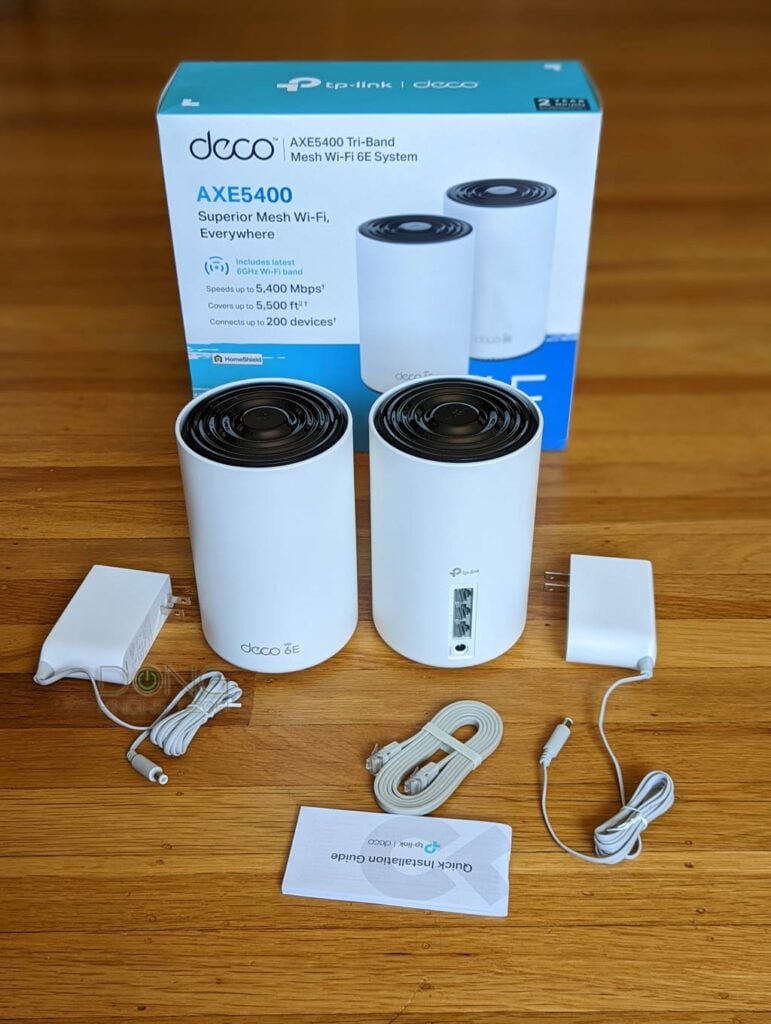
Tp-Link Deco M5 Review: Price And Competition
The TP-Link Deco is top value for money: it costs PS230 for the kit that includes three nodes
. This is a better deal than the basic Google Wifi Kit, which only costs PS230 but includes just two nodes. The three-pack cost PS329. The BT Whole Home Wi-Fi system includes three nodes, though, and that’s only PS190. We have used the Linksys Velop mesh network system, which is faster but more costly at PS380 per three nodes.
Need Help? Don’T See What You Are Looking For?
Please let us know, and we will get to work on your favourite product or category within the shortest time possible. Let us assist you in your search on Amazon.

Affordability
- Good Wireless Performance
- Easy and fast installation
- Really Well Done and Thorough Parental Controls
- Ethernet + Wireless Backhaul
- It Has A Competitive Price
Tp Link Deco S4 Review
Deco S4 WiFi system
.
The good things are that it’s easy to set up, works with your existing modem, don’t act like a bottleneck, and offers WiFi coverage over an area of many miles
. One of the great deals is its price! I finally feel like I’m getting all the internet connections that I should get!
Tp-Link Deco Mesh Wifi System (Deco S4) – Up To 5,500 Sq.Ft. Coverage, Replaces Wifi Router And Extender, Gigabit Ports, Works With Alexa, 3-Pack
TP-Link Deco Mesh WiFi System (Deco S4) – Up to 5,500 Sq.ft. Coverage, Replaces WiFi Router and Extender, Gigabit Ports, Works with Alexa, 3-pack
The Deco S4 is the main unit, which covers up to 2,000 square feet with AC1200 Mbps speeds.
The two satellite units (Deco M5 and Deco Mini) extend the signal range further and ensure reliable coverage throughout your home
. 1. A New Way to WiFi – Deco Mesh technology gives you a better WiFi experience in all directions with faster WiFi speeds and strong WiFi signal to
-
Bettern Coverage Than Traditional Wifi
-
Seamless And Stable Wifi
-
Incredibly Fast Ac1200 Speeds
-
With Advanced Deco Mesh Technology
-
Robust Parental Controls
TP-Link, the leading global supplier of innovative networking products, introduces the Deco Mesh WiFi System (Deco S4), a new way to WiFi.
With Deco Mesh technology, this system provides a better WiFi experience in all directions with faster speeds and a stronger signal than traditional routers
.
Three units work seamlessly together to create a mesh network that can cover up to 5,500 square feet, eliminating any dead zones in your home
.
TP-Link Deco Mesh WiFi System (Deco S4) is a new way to WiFi that uses mesh technology to give you a better experience in all directions, with faster speeds and a strong signal that covers your whole home
.
Traditional WiFi routers can’t match the coverage of the Deco S4 three units, which create a seamless mesh network that can cover up to 5,500 square feet
.
Mesh WiFi systems are the future of WiFi technology, and TP-Link’s Deco Mesh WiFi System (Deco S4) is one of the best on the market
.
of coverage, this system can replace your traditional WiFi router and provide you with a better WiFi experience in all directions.
The Deco S4 system uses mesh technology to create a strong WiFi signal throughout your home, eliminating any dead zones
.
TP-Link’s Deco Mesh WiFi System is perfect for homes that need better coverage in all directions
.
The Deco S4 replaces your traditional WiFi router and creates a mesh network with speeds up to AC1200
.
Another big benefit is that you can use two Ethernet ports (useful for network switches/hubs or plugging in devices without WiFi)
. It is also compatible with all TP-Link Wifi units so you can easily expand or upgrade them. Your device will get the strongest signal from the S4 router. You don’t have to switch networks like you would with a traditional WiFi extender.
The speed is fast too
.
